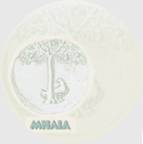A stream crossing the
property during the wintertime serves as a natural boundary between the two
slopes, each of which enjoys a different kind of soil and vegetation. It is this
which provides Milia with such a great variety of flora.
One
of the slopes consists of a
schist-like rock, and is graced by chestnut trees, plane trees, acorn trees and
cone-bearing trees, while the other slope of limestone hosts aromatic herbs,
various flower-bearing bushes, olive trees, pear and wild pear, and carob trees,
in addition to impressive rocky masses. You may be fortunate enough to catch
sight of the rare vulture Gypaetus Barbatus, the bone-eating vulture or
“kokkalas”, as we say on Crete, while strolling around on the rocky masses
punctured with mammoth hollows.
Milia won the first prize in an
international competition for ecotourism in 2003 which was organized by
Skal International through
54 nominees.
History
Until 1982, when the
decision was made for environmental improvements and the restoration of the
mediaeval settlement, Milia was a place where irresponsible human activities,
especially fires and over-grazing, had resulted in the erosion of earth and a
diminished water supply, cultivable earth and abundant water having been two of
the most notable and precious attributes of the place at one point.
The
initial work at Milia included the systematic cultivation of the land,
which included the planting of many thousands of trees, some endemic to the
island. The entire property was fenced in and anti-fire zones were created.
Reconstruction of the buildings themselves began in 1991 and was completed in
1994.
|

